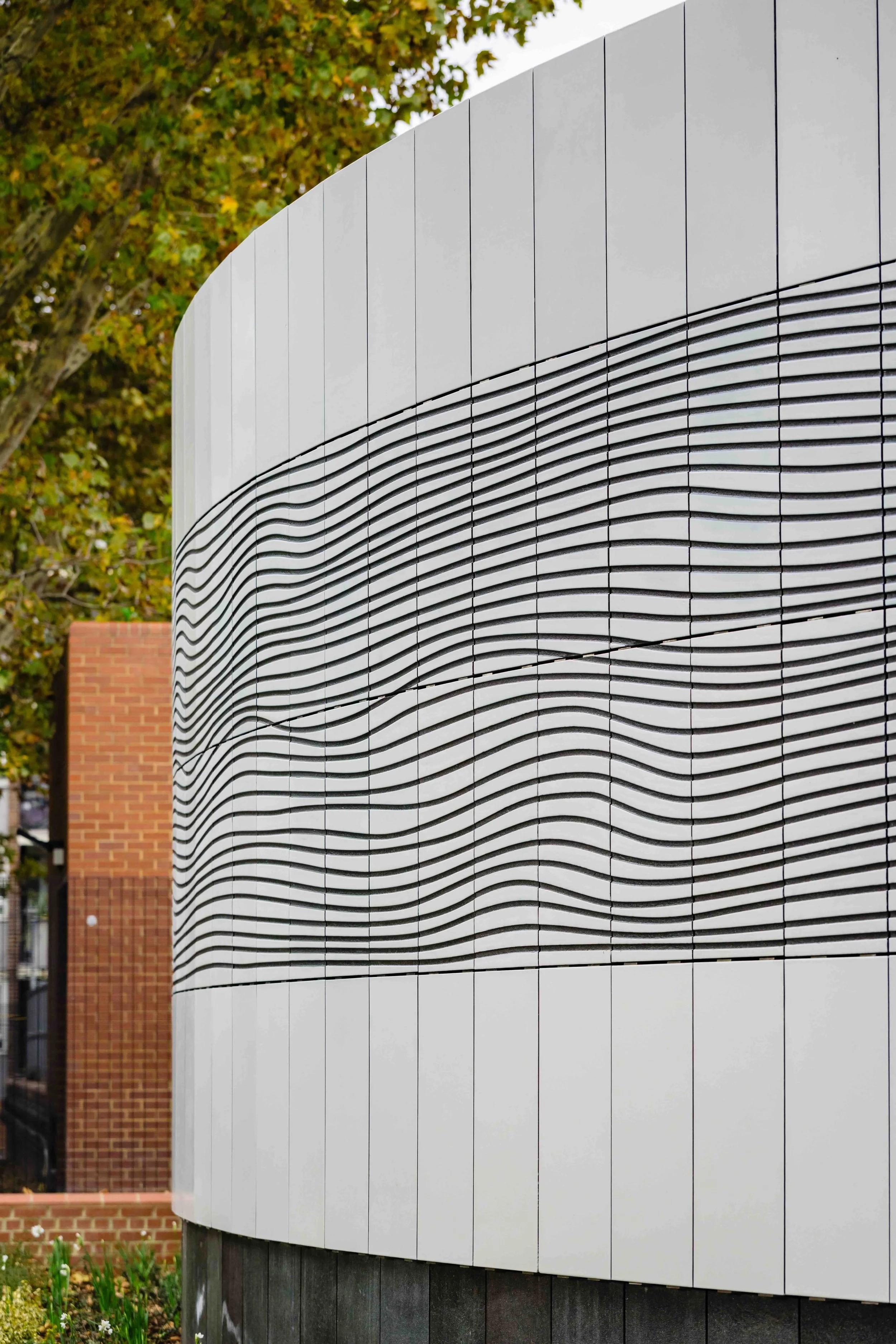Earl Pumping Station, Tideway, London
Earl Pumping Station, London: Bone, Soot and Oil, Lubna Chowdhary
Year
2025
Client
fereday pollard for Tideway
Artist
Lubna Chowdhary
Service
Commission Management
Location
Earl Pumping Station, London
A permanent commission for Earl Pumping Station
Lubna Chowdhary has been commissioned by Tideway to create an artwork for this site.
The ‘cultural meander’ or heritage theme for the East section of the tunnel in the Heritage Interpretation Strategy is ‘The Shipping Parishes – Gateway to the World’. Within this heading, the site’s narrative site-specific narrative for Earl Pumping Station relates to the site’s proximity to Greenland Dock, formerly known as the Howland Great Wet Dock. It is one of the earliest enclosed docks within the historic Port of London.
Built between 1695 and 1699 and later renamed Greenland Dock, it was expanded at the beginning of the 20th century. Originally used to refit East India Company merchant ships, from the early 18th century the dock was the berth and processing plant for the London’s Arctic whaling fleet, which operated off the Atlantic coast of Norway and Greenland. Whaling was an important economic activity between the 16th-19th centuries. Initially operating under a charter of Elizabeth I, the Port of London whaling fleet played a leading role in the commercial exploitation in cetacean resources.
It became commercially unviable in the early 19th century due to overexploitation and a decline in the market for whale oil following the development of chemical and petrochemical alternatives. This narrative offers opportunities to explore the ecological and cultural impact of historic industrial exploitation of marine fauna.
“The intersections of diverse processes and materials have always interested me and here, many natural translations between the historical craft of scrimshaw and contemporary materials and technological processes enabled me to realise this ambitious project with the support of architects and engineers on the Tideway team.”
The artist in response to the Heritage Interpretation Strategy (HIS) has developed an artwork which takes its inspiration from the engraved black scrimshaw marks on whalebone, and the striations on the underside of whales, both referencing the whaling trade undertaken in nearby Greenland Dock.
The artwork comprises a two metre high band of lines cut into the light-coloured glazed panels to reveal the lava stone surface, creating a series of dark striations around the 70m circumference and two storeys high eliptical shaft structure. The cladding is volcanic lava from the eruption of Mount Etna in 1669, incised and hand-glazed in Sicily to produce the flowing bands of dark lines cut into an ivory background.
Lubna Chowdhary has conceived the commission to be visible from all views into the site, and the band extends around the entire shaft, responding to both the street and surrounding existing and potential future developments.
This is a modest yet striking proposal by Lubna who specialises in ceramics. It is a balanced response to the site referencing the HIS but also sympathetic to the surrounding environment. It also references the presence of the river at this more removed site; and should become a welcomed part of the streetscape. She has collaborated closely with the architect and contractor to consider the relationship of the shaft to the artwork to create an integrated rather than applied work.
The artwork is fully installed and there is some works required to be completed before the road is reopened to the public.
Contractor - CVB (Costain, VINCI and Bachy Soletanche Joint Venture). The stone is a glazed lava stone from Barbaro Marmi, Sicily. Supplied to the contractor by Italian Lab. Installed by Szerelmey.
Detailed design for CVB by Weston Williamson + Partners.
For more information on the site’s history see Tideway’s Heritage Interpretation Strategy.
“It is a a stunning and unique architectural intervention into the context of a 1940’s brick-built pumping station and residential street on the border of Lewisham and Southwark. ”
Lubna Chowdhary has Master’s degree in Ceramics from the Royal College of Art. She creates sculptural objects and site-specific artworks, working primarily in the field of ceramics. She was shortlisted for the Jerwood Applied Arts Prize and has completed artist residencies at the Victoria and Albert Museum and Camden Arts Centre, London. She lives and works in London.
Her work is in a number of permanent public collections including: Tate, Jerwood, Cartwright Hall, Bradford, Leicester City Museum; Mead Gallery, Warwick: Shipley Art Gallery, Gateshead; Nottingham Castle Museum; Abingdon Museum, Oxfordshire; Oldham Museum and Art Gallery; Birmingham Museum and Art Gallery; Poole Museum, Fiorucci Foundation, Italy; Kiran Nadar Museum, New Delhi; Gallery of NSW, Sydney; Jameel Foundation, Dubai and M+ Hong Kong. Museum, New Delhi, Gallery of NSW Sydney, Jameel Foundation Dubai and M+ Hong Kong. A major solo show of her work, Erratics, was shown at MIMA, Middlesborough, and work was included in the exhibition Strange Clay: Ceramics in Contemporary Art, at the Hayward London 2022 and PLURIVERSE at the Graves Gallery, Sheffield in 2024.
For more information see: http://lubnachowdhary.co.uk
For more information on Tideway see:
www.tideway.london















